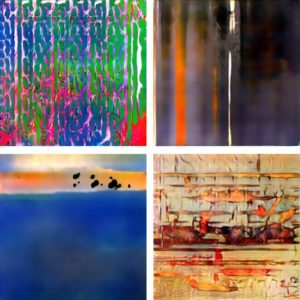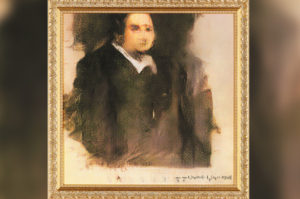Most people – by which I mean those who sometimes visit an art gallery on holidays – perceive art as arduous, labor-intensive paintings or sculptures with a great aesthetic. We usually associate it with renaissance beaux-arts, Italian mannerism, Rubenesque characters or baroque era. Needless to say, as art is a very subjective phenomenon, there is no particular definition of it. But we usually agree upon the definition of an artist: a person who creates the art.
But what if the art was created by artificial intelligence? Can we perceive a painting created by an algorithm as an art?
For the New York art scene, the answer to this question is yes. In October 2018, the auction at the New York auction house Christie’s changed the game. An algorithm-generated print, Portrait of Edmond de Belamy, was sold for an enormous price of $432,500. The upshot of this occurrence was creating the so-called “AI-art gold rush.” Many programmers found their artistic niche on the market and started creating various algorithms to generate art. Among their works, we can find such as Psychodelic Wisteria, Unity Rising and Divided Sunshine by AICAN, DeepDream algorithm by Alexander Mordvintsev, and many others.
The main machine learning class systems to produce AI-art are generative adversarial networks (GANs). It works following way: an artist provides GAN with a training set (a database where he or she uploads for example 300 Medieval European paintings), and then the algorithm creates a new canvas imitating the data set. This way, the system can generate authentically looking medieval art in no time with only an algorithm defined by the algebraic formula. Of course, we can influence the final output by creating one more random painting or playing with the training set: adding our sketches or drawings. But in many cases, AI-art is very eccentric due to its face deformations, as an algorithm does not know how to imitate a human face accurately.
So the heated debate is about whether we can perceive these algebraically generated pixels as art?
The critics of AI-art argue that painting with no intent and message cannot be art. Not only can’t it convey any profound virtues and values as the machine doesn’t know basic human emotions, but also we cannot identify with the system. But isn’t art also a process? A process of creation, reflection, and a bridge between creativity and reality? Behind each of the algorithms stands a person who created the generative model and gathered the data set. Many of them created heaps of distinctive artworks to upload them to the data set. Moreover, to tackle the originality part, there is an evolution to GAN – a new system CAN: creative adversarial network. This system creates smooth abstract images in order not to produce anything that could be recognizable.
Over the years, society was always intrigued by the collaboration between art and technology. Twenty and twenty-first-century enabled us to see the output of it, which in many cases can be compared to human-made art. Between DeepDream or Magenta, where everyone can create their AI-art and Portrait of Edmond de Belamy, sold at the New York auction house, is a striking disparity but, arguably, both of them can be perceived as copacetic, eccentric works of art.
References:
- https://aiartists.org/ai-generated-art-tools
- https://www.americanscientist.org/article/ai-is-blurring-the-definition-of-artist
- https://thenypost.files.wordpress.com/2018/10/ai-portrait-ap.jpg?quality=90&strip=all&w=1033
- https://www.aican.io
- https://en.wikipedia.org/wiki/Generative_adversarial_network (GAN)


